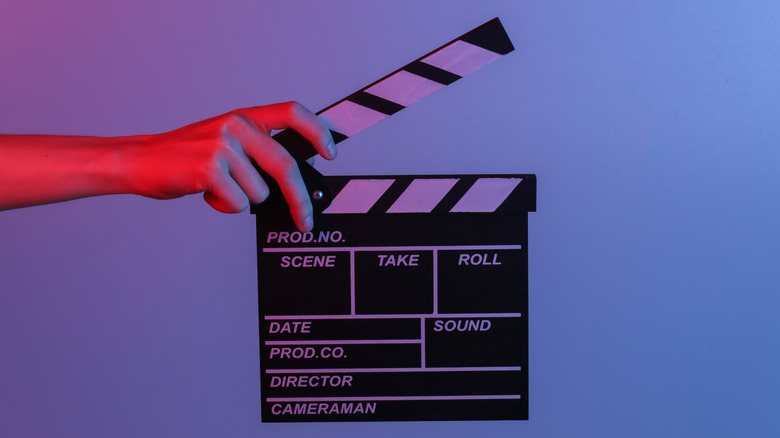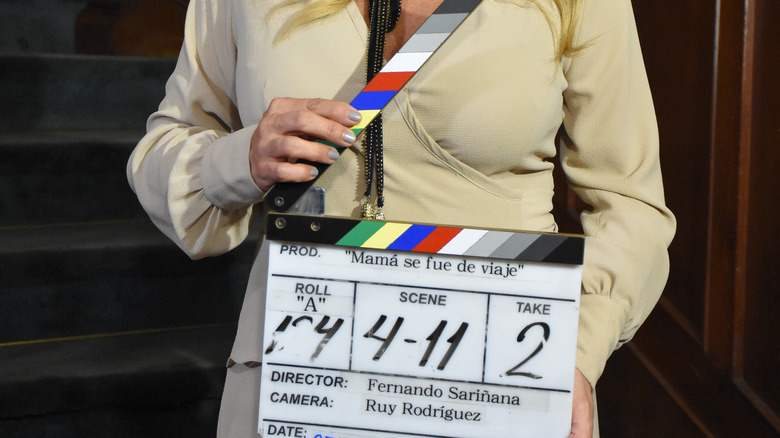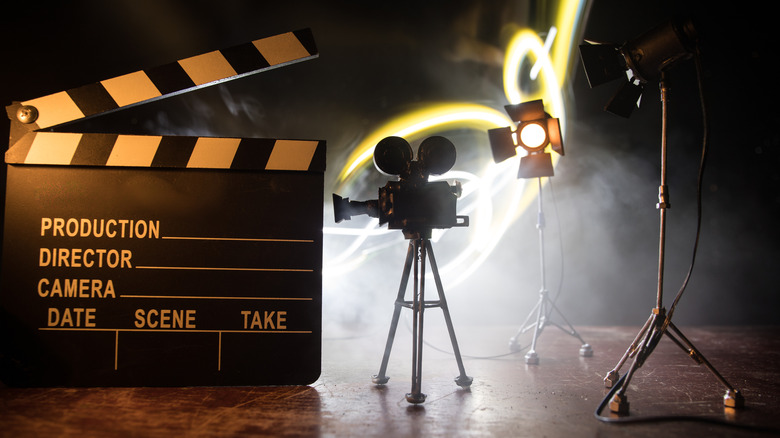Why Do They Slap A Clapperboard Before Filming A Movie Scene?
Most everyone has seen a clapboard used in filmmaking. It's a tool emblematic of the movie industry. The clapboard, or film slate as it's more commonly known in the United States, consists of two components. The slate is a mini-blackboard where all the necessary details are noted.
According to Studiobinder, with the advent of "the talkies," hinged film slates became the norm. The idea to combine the clapper and film slate was the brainchild of Australian movie maker F.W. Thring. His idea was refined by one of the first sound experts, Leon M. Leon. Today, movie-makers use lighter acrylic whiteboard clappers more frequently, although you'll still occasionally run into a clunkier old-school wood and chalkboard model.
So what's the point of using a clapboard, anyway? Simply put, it's to alert the post-production team when the camera has started or stopped rolling. The actual clap acts as a guide for the film editor to synch up each take's audio and video. Studiobinder reports that the film editor locates the spike in the audio waveform created by the clapboard and lines up the video at the point where the clapper ... clapped.
Lights, camera, action!
Mental Floss reports that sound and images are recorded separately during the move-making process. Cameras capture the images while the sound is recorded on a digital or analog recording device. The two components must be perfectly lined up. Sometimes the actors must re-do their dialogue in a recording studio, especially if the set is particularly noisy.
Some larger film companies have made the move to digislates, also known as smart slates. According to Mental Floss, these high-tech clapperboards have an LED display with a timecode provided by the audio recorder. So images and sound are synched up, and the film editors no longer need to search out that clap. This streamlines the process making it quicker and easier.
Studiobinder reports that, for years now, stored in the media files. However, sometimes film still needs to be synched up manually. This explains why the assistant director will call for quiet by saying "picture's up" so the cast and crew know the next call is "action!"
Hooray for Hollywood
The clapperboard is ubiquitous and irreplaceable on every film set. The NFI claims that it's vital that the slate lines up with the script supervisor's report. What do the filmmakers and the editors need to see? First is the roll number (the roll of film currently being used), the scene number (which is marked using both numbers and letters; the letter denotes the shot, while the number represents the scene number), and take number (these are easy-peasy because the numbers are enough to indicate what take you're on).
The rest of the clapperboard sections are mainly self-explanatory. There's the FPS, or frames per second, and a slot to indicate whether you are filming indoors or outdoors or during the day or night. If you are in charge of the clapboard, you will stand where the camera operator instructs you to so the slate in the frame and also in focus (via NFI). Sounds like a pretty fun gig!


